| Revision as of 04:53, 6 March 2009 editPaulista01 (talk | contribs)711 edits →First Portuguese (1500-1700)← Previous edit | Revision as of 14:48, 6 March 2009 edit undoOpinoso (talk | contribs)7,395 edits Undid vandalism 275332193 by Paulista01 (talk)Next edit → | ||
| Line 25: | Line 25: | ||
| Most of these Portuguese were men. The number of ] ] in Brazil during the colonial period was low. For that reason, many ] ] had relationships with Amerindian women and, later, with female African slaves, which then resulted in racial miscegenation.<ref></ref><ref></ref><ref></ref><ref>[http://analisesocial.ics.ul.pt/documentos/1223553017C9jFA0ze9Vo91NT0.pdf A mulher no contexto | Most of these Portuguese were men. The number of ] ] in Brazil during the colonial period was low. For that reason, many ] ] had relationships with Amerindian women and, later, with female African slaves, which then resulted in racial miscegenation.<ref></ref><ref></ref><ref></ref><ref>[http://analisesocial.ics.ul.pt/documentos/1223553017C9jFA0ze9Vo91NT0.pdf A mulher no contexto | ||
| da imigração portuguesa no Brasil]</ref> |
da imigração portuguesa no Brasil]</ref> | ||
| ===Growing Portuguese immigrants (1700-1850)=== | ===Growing Portuguese immigrants (1700-1850)=== | ||
Revision as of 14:48, 6 March 2009
Ethnic group| File:Portuguese immigrants in Brazil.jpg
Portuguese immigrants in Brazil | |
| Regions with significant populations | |
|---|---|
| All Brazil | |
| Languages | |
| Portuguese | |
| Religion | |
| Predominantly Roman Catholic | |
| Related ethnic groups | |
| White Brazilian, Portuguese people |
Portuguese-Brazilian (Template:Lang-pt) is a Portuguese born citizen with Brazilian citizenship or a Brazilian born citizen of Portuguese ancestry or citizenship.
Brazil has long been a melting pot for a wide range of cultures. From colonial times Portuguese Brazilians have favoured assimilation and tolerance for other peoples, and intermarriage was more acceptable in Brazil than in most other European colonies. Portuguese are the main European ethnic group in Brazil, and most Brazilians can trace their ancestry to an ethnic Portuguese or a mixed-race Portuguese. Portuguese Brazilians first appeared in the colonial period, in the 16th century, as settlers and colonists, though most arrived in the early 20th century, as immigrants. Brazil is the only Portuguese-speaking nation in the Americas, and the largest in the world.
Immigration to Brazil
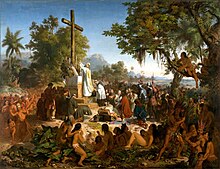

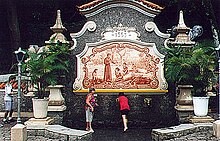
First Portuguese (1500-1700)
Some of the earliest colonists for whom we have written records are João Ramalho and Caramuru. At the time the Portuguese Crown was focused on securing its highly lucrative Portuguese Empire in Asia, and so did little to protect the newly discovered lands in the Americas from foreign interlopers. As a result, many pirates, mainly French, began dealing in pau brasil with the Amerindians. This situation worried Portugal, which in the 1530s started to colonize Brazil, principally for defensive reasons. The towns of Cananéia (1531), São Vicente (1532) and Iguape (1538) date from that period.
By the mid-16th century, Portuguese colonists were already settling in significant numbers, mainly along the coastal regions of Brazil. Numerous cities were established, including Salvador (1549), São Paulo (1554) and Rio de Janeiro (1565). While some Portuguese settlers came willingly, many were degredados. Nevertheless, these deported convicts were not thieves and murderers, as is often believed, but rather tended to be people guilty of committing "crimes" against religion or morality. Thus, they were primarily New Christians, individuals accused of witchcraft or sorcery, reprobate priests, blasphemers, homosexuals and adulturers. In other words, these exiles were condemned for "criminal" behavior that would not be considered illegal by modern standards.
During the 17th century, most Portuguese settlers in Brazil were relatively wealthy people who moved to the northeastern part of the country to establish the first sugar plantations. Some were Sephardi Jews who had been expelled from Portugal by the Inquisition. The city of Recife, in particular, had a thriving Jewish community, which founded the first synagogue in the Americas, i.e. the Kahal Zur Israel Synagogue. Some Portuguese-Gypsies also immigrated to Brazil during this period.
Most of these Portuguese were men. The number of Portuguese women in Brazil during the colonial period was low. For that reason, many Portuguese men had relationships with Amerindian women and, later, with female African slaves, which then resulted in racial miscegenation.
Growing Portuguese immigrants (1700-1850)
In the 18th century, immigration to Brazil from Portugal increased dramatically. Many gold and diamond mines were discovered in the region of Minas Gerais, which then led to the arrival of not only Portuguese, but also of native-born Brazilians. Regarding the former, most were peasants from the Minho region in Northern Portugal. In the beginning, Portugal stimulated the immigration of minhotos to Brazil. After some time, however, the number of departures was so great that the Portuguese Crown had to establish barriers to further immigration. Most of these Portuguese involved in the goldrush ended up settling in Minas Gerais and in the Center-West region of Brazil, where they founded dozens of cities such as Ouro Preto, Congonhas, Mariana, São João del Rei, Tiradentes, Goiás, etc.
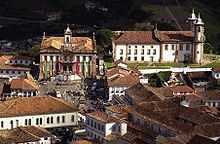
Between 1748 and 1756, approximately 6,000 settlers from the Azores Islands arrived in the Southern Region of Brazil. The majority, composed of small farmers and fishermen, settled along the litoral of Santa Catarina and Rio Grande do Sul states. Florianópolis and Porto Alegre were founded by Azoreans, who accounted for over half of Rio Grande do Sul and Santa Catarina's population in the late 18th century. Unlike previous trends, in the south entire Portuguese families came to seek a better life for themselves, not just men. In passing, a small settlement of Macanese people from Macau also occurred. During this period, the number of Portuguese women in Brazil increased, which resulted in a larger white population. This was especially true in Southern Brazil.
A significant immigration of very rich Portuguese to Brazil occurred in 1808, when Queen Maria I of Portugal and her son and regent, the future João VI of Portugal, fleeing from Napoleon, relocated to Brazil with 15,000 members of the royal family, nobles and government and established themselves in Rio de Janeiro. They returned to Portugal in 1821, and in 1822 Brazil became independent. Thousands of ordinary Portuguese settlers left for Brazil after independence.
Waves of Portuguese immigrants (1850-1960)

After independence from Portugal in 1822, Portuguese emigration to Brazil continued and, instead of a decrease, the Portuguese population actually increased significantly. In 1850, the traffic of African slaves to Brazil was forbidden, and the Brazilian Government worked towards attracting European immigration to Brazil in order to obtain workers for the coffee plantations that were spreading enormously in the region. Consequently, in the late 19th and early 20th centuries, hundreds of thousands of Portuguese immigrated to Brazil. Most of them were peasants from the rural areas of Portugal and tended to immigrate as entire families. The majority settled in urban centers, mainly in São Paulo and Rio de Janeiro, working mainly as small traders.
They and their descendants were quick to organize themselves and establish mutual aid societies (such as the Casas de Portugal), hospitals (e.g. Beneficência Portuguesa de São Paulo, Beneficência Portuguesa de Porto Alegre, Hospital Português de Salvador, Real Hospital Português do Recife, etc.), libraries (e.g. Real Gabinete Português de Leitura in Rio de Janeiro and in Salvador), newspapers (e.g. Jornal Mundo Lusíada), magazines (e.g. Revista Atlântico) and even major sports clubs with football teams, including the Club de Regatas Vasco da Gama and Associação Atlética Portuguesa in Rio de Janeiro, the Associação Portuguesa de Desportos in São Paulo, the Associação Atlética Portuguesa Santista in Santos, and the Associação Portuguesa Londrinense in Londrina.
Low Portuguese immigration (1960-present)
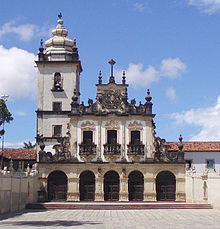
In the 1930s, the Brazilian President Getúlio Vargas created a law that established difficulties to the settlement of immigrants in Brazil. This law made Portuguese immigration decline.
However, between 1940 and 1960 (when António de Oliveira Salazar ruled as the head of the Estado Novo regime), thousands of Portuguese citizens, even from their African possessions (such as Portuguese Angola, Portuguese Mozambique, Cape Verde), and from their Asian possessions, (such as Macau and Timor Leste), still immigrated to Brazil. Due to the independence of that Portuguese overseas provinces after the 1974 leftist military coup at Lisbon known as the Carnation Revolution, a new wave of Portuguese citizens arrived in Brazil until the late 1970s.
Economic reasons, among others of social, religious and political nature, are the main cause for the large Portuguese diaspora in Brazil, the country received the majority of Portuguese immigrants in the world.
After Portugal's recovery from the effects of the 1974 military coup, and in the 1980s and 1990s with the growth of the Portuguese economy and a deeper European Integration, very few Portuguese immigrants settled in Brazil. In the 1990s and 2000s, the Portuguese diaspora was living mainly in the European Union. However, in recent years, some hundreds of Portuguese are marrying, working, and living in Brazil.
Portuguese immigration in numbers
| Portuguese immigration to Brazil from the beginning of colonization, in 1500, until present day in 1990 Source: Brazilian Institute for Geography and Statistics (IBGE) |
|||||||||||||||
| Nationality | 1500-1700 | 1701-1760 | 1808-1817 | 1827-1829 | 1837-1841 | 1856-1857 | 1881-1900 | 1901-1930 | 1931-1950 | 1951-1960 | 1961-1967 | 1981-1991 | |||
| Portuguese | 100,000 | 600,000 | 24,000 | 2,004 | 629 | 16,108 | 316,204 | 754,147 | 148,699 | 235,635 | 54,767 | 4,605 | |||
Characteristics of the immigrants
Prior to Independence (1822), the typical Portuguese immigrant in Brazil was a single man. As an example, in the records of the community of Inhaúma, in the countryside of the state of Rio de Janeiro, from 1807 to 1841, the Portuguese born population composed approximately 15% of the population, of whom 90% were males. Inhaúma was not a single case: this trend occurred since the beginning of colonization. As of 1872, the Consul general of Rio de Janeiro reported: (...)49,610 (Portuguese) arrivals in the past ten years by sailing ships, major, male, 35,740 and, female, 4,280; of these, 13,240 married and 22,500 unmarried; minor, 9,590, as a family, 920(...)
Although these data were not complete, because they did not include who arrived as passengers of small ships or illegally, we clearly see that the Portuguese female quota was only 1/8 of total immigrants. In Bahia, as of 1872, the situation was even clearer: in a total of 1,498 Portuguese, only 64 were women (about 4.2%). The difference between the number of Portuguese men and women in Brazil can be found in the genetic structure of the population. The most important genetic resource about Brazilians found that, on the paternal side, 98% of the White Brazilian Y Chromosome comes from a European male ancestor, only 2% from an African ancestor and a complete absence of Amerindian contributions. On the maternal side, 39% have a European Mitochondrial DNA, 33% Amerindian and 28% African female ancestry. Even though this analysis only shows a small fraction of a person's ancestry (the Y Chromosome comes from a single male ancestor and the mtDNA from a single female ancestor, while the contributions of the many other ancestors is not specified) it confirms that the early European settlers, particularly the Portuguese, came alone to Brazil and mixed with the indigenous and African women. Geneticist Sérgio Pena asserted:
The Portuguese need to look at Brazil to know themselves. We are the keepers of the Portuguese masculinity (...) Brazil is tremendously similar to Portugal; there are no significant differences between the Portuguese and Brazilian Y chromosomes.
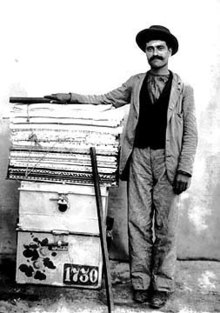
The disparity between the number of men and women among the Portuguese immigrants in Brazil really started to change in the early 20th century, when the largest numbers of Portuguese immigrated to Brazil. In the records of the Port of Santos, between 1908 and 1936, Portuguese female immigrants accounted for 32.1% of the Portuguese who entered Brazil, compared to less than 10% prior to 1872. This figure was similar to the entries of women of other nationalities, such as Italians (35.3% of women), Spaniards (40.6%) and Japanese (43.8%) and higher than the figures found among Turks (26.7%) and Austrians (27.3%). Before the 19th century, the vast majority of the Portuguese immigrants in Brazil were single men, while starting in the early 20th century many arrived as entire families, with a considerable number of Portuguese women. However, the majority still immigrated alone to Brazil (53%). Only the Turks (62.5%) arrived as "alone immigrant" in a higher percentage than the Portuguese. In comparison, only 5.1% of the Japanese immigrants arrived alone to Brazil. The Japanese keep a strong familiar connection when they immigrated to Brazil, with the largest numbers of family members, comprising 5.3 people, followed by Spaniards, with similar figures. The families of Italian origin included lower number of members, at 4.1. The Portuguese, among all immigrants, had the smallest number of people when they immigrated as families: 3.6. About 23% of the Portuguese who disembarked at the Port of Santos were under 12 years old. This figure shows that, for the first time in Brazil's History, large numbers of Portuguese families were settling Brazil.
The Portuguese were also one of the poorest immigrants who went to Brazil during the early 20th century: 57.5% of them were illiterate. Only the Spaniards had a higher percentage of illiteracy: 72%. In comparison, only 13.2% of the Japanese immigrants to Brazil were illiterate.
Portuguese-Brazilian identity

Brazil was colonized by Portugal, and both countries share many cultural aspects: the language, the main religion and many traditions. After independence, the elite of Brazil, even though they were of Portuguese descent, tried to diminish the Portuguese culture in the new country, and establish a Brazilian culture, different from that of Portugal. Portuguese immigration to Brazil has occurred since the 16th century. Since then, the Portuguese mixed a lot with other ethnic groups of Brazil, first with the Amerindians later with Africans.
From the 19th century, their Portuguese-Brazilian descendants mixed with other European immigrants in Brazil, such as Italians and Germans. For all these reasons, many Portuguese-Brazilians of old ancestry do not know or are not interested about their Portuguese ancestry and do not have much affinity with Portugal, different from other more recent immigrant groups in Brazil, such as Japanese Brazilians, who are for the most part, still connected with Japan.
The more recent immigrant groups of Portuguese in Brazil keep a close relation with Portugal and the Portuguese culture mainly through the Casa de Portugal. Several events also take place to keep a cultural interchange between Portuguese and Brazilian students, and between the Portuguese community in Brazil and Portugal. There are many Portuguese associations "Associações Portuguesas" in Brazil. Other institutions preserve the cultural heritage of the Portuguese community like the "Real Gabinete" and the Liceu Literário.
Today, news online like "Mundo Lusíada" keeps the Portuguese immigrants informed about the many cultural events of the Portuguese community in Brazil. A recent analysis suggests that the more recent Portuguese immigrants (from 1900 onwards) had "low rates of intermarriage with native Brazilians and other immigrants".
Identity Merge
Many Portuguese who had a significant importance in the Brazilian culture are known in Brazil as being Brazilians. This way, much of the Portuguese people influence and contribution has been systematically erased from the Brazilian culture. Tomás Antônio Gonzaga, Padre António Vieira, Carmen Miranda are some of the Portuguese who are presented as Brazilians. The Brazilian culture is in large part derived from the Portuguese culture and for the similarities between both cultures and the relatively easy integration of immigrants in Brazil, makes it nearly impossible for some to keep a separate Portuguese identity. Starting from the second generation, Portuguese descendants start seeing themselves as purely Brazilians.
Portuguese in the world
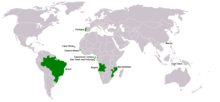
The Portuguese in contemporary Brazil
Portuguese people are the largest immigrant community in Brazil. In the 2000 census, there were 213,203 Portuguese immigrants in Brazil.
In recent years, some Portuguese pensioners have been moving to Brazil, mainly to the northeast, attracted by the tropical weather and the beaches.
Brazilians in contemporary Portugal
The biggest immigrant community in Portugal is the Brazilian one, with 77,000 legal and an estimed 30,000 illegal residents.
How many Brazilians have Portuguese ancestry?

Most Brazilians have some degree of Portuguese ancestry: some may trace their ancestry to 16th century settlers, while others have recent Portuguese origin, dating back to the mid-20th century. Due to the intensive race mixing, Brazilians of different races may have Portuguese ancestry: Whites, Blacks, Amerindians and mixed-race people.
There are no official figures about how many Brazilians have Portuguese roots. This is mainly because the immigration to Brazil from Portugal is very old, making it almost impossible to find correct numbers. Even with Portuguese heritage, many Portuguese-Brazilians identify themselves as being simply Brazilians, since Portuguese culture was a dominant cultural influence in the formation of Brazil (like many Americans which though of British ancestry will never describe themselves as of British extraction, but only as "Americans").
In 1872, there were 3.7 million Whites in Brazil (the vast majority of them of Portuguese ancestry), 4.1 million mixed-race people (mostly of Portuguese-Amerindian-African ancestry) and 1.9 million Blacks. These numbers give the percentage of 80% of people with total or partial Portuguese ancestry in Brazil in the 1870s. At that time, Portuguese were the only Europeans to settle Brazil in large numbers, since other groups only started arriving in large numbers after 1875 (mainly Italians).
In the late 19th and early 20th centuries, a new large wave of immigrants from Portugal arrived. From 1881 to 1991, over 1.5 million Portuguese immigrated to Brazil. In 1906, for example, there were 133,393 Portuguese-born people living in Rio de Janeiro, comprising 16% of the city's population. Rio is, still today, considered the largest "Portuguese city" outside of Portugal itself.
Genetic studies also confirm the strong Portuguese racial influence in Brazilians. According to a study, at least half of the Brazilian population's Y Chromosome comes from Portugal. Black Brazilians have an average of 48% non-African genes, most of them may come from Portuguese ancestors.
Some notable Portuguese-Brazilians

Most notable Brazilians are at least partially of Portuguese descent. However, for the sake of brevity, the following list only mentions a few well-known individuals who were either born in Portugal or who have close Portuguese ancestry, i.e. 1st or 2nd generation.
Historic colonial Portuguese figures of Brazil
The following Portuguese people were either born in Brazil when it belonged to the Portuguese empire, thus Portuguese, or in Kingdom of Portugal. At this time to be a Brazilian was to be a Portuguese born in Brazil.
- Baltazar Fernandes (explorer and early colonist; born in Portugal);
- Bartolomeu de Gusmão (colonial inventor and naturalist; born in Brazil);
- Brás Cubas (founder of Santos; born in Portugal);
- Caramuru (early settler of Bahia; born in Portugal);
- Estácio de Sá (soldier and co-founder of Rio de Janeiro; born in Portugal);
- Manuel da Nóbrega (co-founder of São Paulo; born in Portugal);
- Mem de Sá (Governor-General of Brazil and founder of Rio de Janeiro; born in Portugal);
- Pedro Teixeira (explorer of the Amazon region; born in Portugal);
- Tiradentes (revolutionary who participated in the Inconfidência Mineira; born in Brazil).
Historic Brazilian figures
Although still born under the Portuguese empire,with the independence of Brazil they acquired the Brazilian nationality:
- Dom Pedro I (Brazilian emperor; Portuguese father);
- Frei Galvão (first Brazilian saint; Portuguese father);
- Domitila, Marchioness of Santos (noblewoman and mistress of Pedro I of Brazil; Azorean-Portuguese grandparents);
- Dom Pedro II (Brazilian emperor; Portugues father);
- José Bonifácio de Andrada e Silva (naturalist and statesman; Portuguese grandparents).
Business
- Abílio dos Santos Diniz (chairman and former owner of Grupo Pão de Açúcar; Portuguese parents);
- Albino Sousa Cruz (founder of Souza Cruz; Portuguese-born);
- Antônio Alberto Saraiva (businessman and founder of Habib's; Portuguese-born);
- Antônio Ermírio de Moraes (businessman, chairman of Grupo Votorantim; Portuguese grandfather);
- Dimas de Melo Pimenta (founder of DIMEP; Portuguese-born);
- Fernando Augusto Saraiva (geologist chairman and former owner of (GEA) Ambiental SS Ltda; Portuguese parents);
- Irineu Evangelista de Sousa (Barão de Mauá) (industrialist; Azorean-Portuguese grandparents)
- Joaquim Inácio da Fonseca Saraiva (founder of Livraria Saraiva bookstore chain; Portuguese-born);
- José Francisco Correia (Conde de Agrolongo) (industrialist and philanthropist; Portuguese-born);
- Luís Dumont Vilares (businessman, founder of Indústrias Villares, manufacturer of Atlas elevators; Portuguese-born);
- Manoel Saraiva (businessman, co-founder of (MTE) Metalúrgica Termo Elétrica; Portuguese-born)
- Maria da Conceição Tavares (economist; Portuguese-born);
- Valentim dos Santos Diniz (businessman, founder of Grupo Pão de Açúcar; Portuguese-born).
Literature

- Aluísio Azevedo (writer; Portuguese ancestry - Brazilian-born);
- Antônio Gonçalves Dias (poet; Portuguese father);
- Padre António Vieira (writer; Portuguese-born);
- Augusto Boal (playwright and essayist; Portuguese parents);
- Augusto Emílio Zaluar (poet, writer and journalist; Portuguese-born);
- Basílio da Gama (poet and writer; Portuguese father);
- Casimiro de Abreu (writer; Portuguese father);
- Cecília Meireles (writer; Portuguese grandparents);
- Cláudio Manuel da Costa (writer; Portuguese father);
- Coelho Neto (writer; Portuguese father);
- Euclides da Cunha (writer; grandparents);
- Gregório de Matos (colonial poet; Portuguese father);
- João Ubaldo Ribeiro (writer; Portuguese paternal grandfather);
- Machado de Assis (writer, Portuguese mother);
- Manuel Antônio de Almeida (writer; Portuguese parents);
- Rubem Fonseca (writer; Portuguese parents);
- Tomás Antônio Gonzaga (poet and involved in the Inconfidência Mineira; Portuguese-born).
Music

- Andre da Silva Gomes (colonial composer; Portuguese-born);
- Arthur Napoleão dos Santos (composer and pianist);
- Carmen Miranda (singer and Hollywood actress; Portuguese-born);
- César Guerra-Peixe (composer and conductor; Portuguese father);
- Daniela Mercury (singer; Portuguese father);
- Dóris Monteiro (singer; Portuguese parents);
- Fernanda Abreu (singer and songwriter; Portuguese father);
- Francisco de Morais Alves (singer; Portuguese parents);
- Aníbal Augusto Sardinha (Garoto) (violinist and composer; Portuguese parents);
- Joanna (singer and songwriter; Portuguese father);
- João Ricardo Carneiro Teixeira Pinto (principal composer of Secos & Molhados; Portuguese-born);
- Marcos Portugal (colonial composer; Portuguese-born);
- Nelson Gonçalves (singer; Portuguese parents);
- Nilton Bastos (sambista; Portuguese father);
- Roberto Leal (singer; Portuguese-born).
Sciences
- Alberto Pacheco (Professor at São Paulo State University specialist on cemetery contamination and groundwater; Portuguese-born).
Entertainment

- Amácio Mazzaropi (actor and film-maker; Portuguese mother);
- Antunes Filho (theater director de teatro; Portuguese parents);
- Bibi Ferreira (actress; Portuguese maternal grandmother);
- Elza Gomes (actress; Portuguese-born);
- Eugênia Câmara (actress; Portuguese-born);
- Fabiana Oliveira (actress; Portuguese father);
- Fernanda Montenegro (Oscar-nominated actress; Portuguese grandparents);
- Lília Cabral (atriz, Portuguese mother);
- Maria Adelaide Amaral (playwright; Portuguese-born);
- Marília Pêra (actress; Portuguese father);
- Procópio Ferreira (actor; Portuguese parents);
- Ruth Escobar (actress and businesswoman; Portuguese-born);
- Ruy Guerra (director; Portuguese-born);
- Thiago Lacerda (actor; Portuguese grandparents);
- Anderson Deco (Portuguese footballer; unknown).

Fine Arts
- Antônio Francisco Lisboa (Aleijadinho) (colonial sculptor and architect; Portuguese father);
- Agostinho da Piedade (first sculptor in Brazil; Portuguese-born);
- Artur Barrio (sculptor and artist; Portuguese-born);
- Christiano Júnior (photographer; Portuguese-born);
- Joaquim Insley Pacheco (photographer; Portuguese-born);
- Joaquim Tenreiro (plastic artist and furniture designer, Portuguese-born);
- Manuel da Costa Ataíde (colonial painter; Portuguese parents);
- Mestre Valentim (colonial sculptor; Portuguese father);
- Ricardo Severo (architect who introduced the neocolonial style; Portuguese-born);
- Victor Meirelles (painter; Azorean-Portuguese parents).
Government and politics
- Afonso Augusto Moreira Pena (Portuguese ancestry- Brazilian citizenship);
- Antônio Carlos Magalhães (politician; paternal Portuguese grandparents);
- Artur da Costa e Silva (Brazilian president; Portuguese parents);
- Fernando Henrique Cardoso (Brazilian president; Portuguese grandparents);
- Getúlio Vargas (Brazilian president; descendant of Azorean-Portuguese);
- José Gomes Temporão (Health Minister in the Lula administration, Portuguese-born);
- Mário Covas (politician; Portuguese grandparents);
- Nicolau Pereira de Campos Vergueiro (Senador Vergueiro) (politician; Portuguese-born);
- Rodrigues Alves (Brazilian president; Portuguese grandparents);
- Rubem Fonseca (Brazilian writer).
References
- Social Problems in Global Perspective
- The Phylogeography of Brazilian Y-Chromosome Lineages
- Os Genes de Cabral
- [http://analisesocial.ics.ul.pt/documentos/1223553017C9jFA0ze9Vo91NT0.pdf A mulher no contexto da imigração portuguesa no Brasil]
- Portuguese Immigration (History)
- Result of Portuguese Immigration (IBGE)
- Portuguese Economy in the 1980s
- Marriage beteween Portuguese and Brazilian
- Portuguese people in Brazil
- Color and genomic ancestry in Brazilians
- Os Genes de Cabral | accessdate=January 23 | accessyear=2008}}
- Portugueses IBGE
- ^ Imigração portuguesa
- Casa de Portugal
- Universia Brasil
- Real Gabinete
- Liceu Literário
- "Mundo Lusíada"
- Klein HS (1989). "". Rev Bras Estud Popul (in Portuguese). 6 (2): 17–37. PMID 12342854.
- Migration Information Source - Shaping Brazil: The Role of International Migration
- Câmara Portuguesa de Comércio no Brasil
- Imprensa portuguesa liga imigrantes brasileiros à criminalidade, diz estudo
- ^ Parra FC, Amado RC, Lambertucci JR, Rocha J, Antunes CM, Pena SD (2003). "Color and genomic ancestry in Brazilians". Proc. Natl. Acad. Sci. U.S.A. 100 (1): 177–82. doi:10.1073/pnas.0126614100. PMC 140919. PMID 12509516.
{{cite journal}}: Unknown parameter|month=ignored (help)CS1 maint: multiple names: authors list (link) - Evolução da população brasileira segundo a cor
- Brasil 500 anos
- Observatorio da Imprensa - Materias - 02/04/2003
- Os Genes de Cabral
See also
- Portuguese
- Geographic distribution of Portuguese
- Demography of Brazil
- White Brazilians
- White Latin American
- Brazilian people
References
External links
- Article about immigration to Brazil
- IBGE, in Portuguese
- Casa do Brasil quer imigração em debate na cimeira UE-Brasil
| |||||||||||||||||||||||||||||||||||||||||||||||||||
| Related topics | |||||||||||||||||||||||||||||||||||||||||||||||||||
| Brazil articles | |||||||
|---|---|---|---|---|---|---|---|
| History | |||||||
| Geography | |||||||
| Politics | |||||||
| Economy |
| ||||||
| Society |
| ||||||
| Portuguese diaspora | ||
|---|---|---|
| Africa (Luso-Africans) |  | |
| Americas | ||
| Asia (Luso-Asians) | ||
| Middle East | ||
| Europe | ||
| Oceania | ||